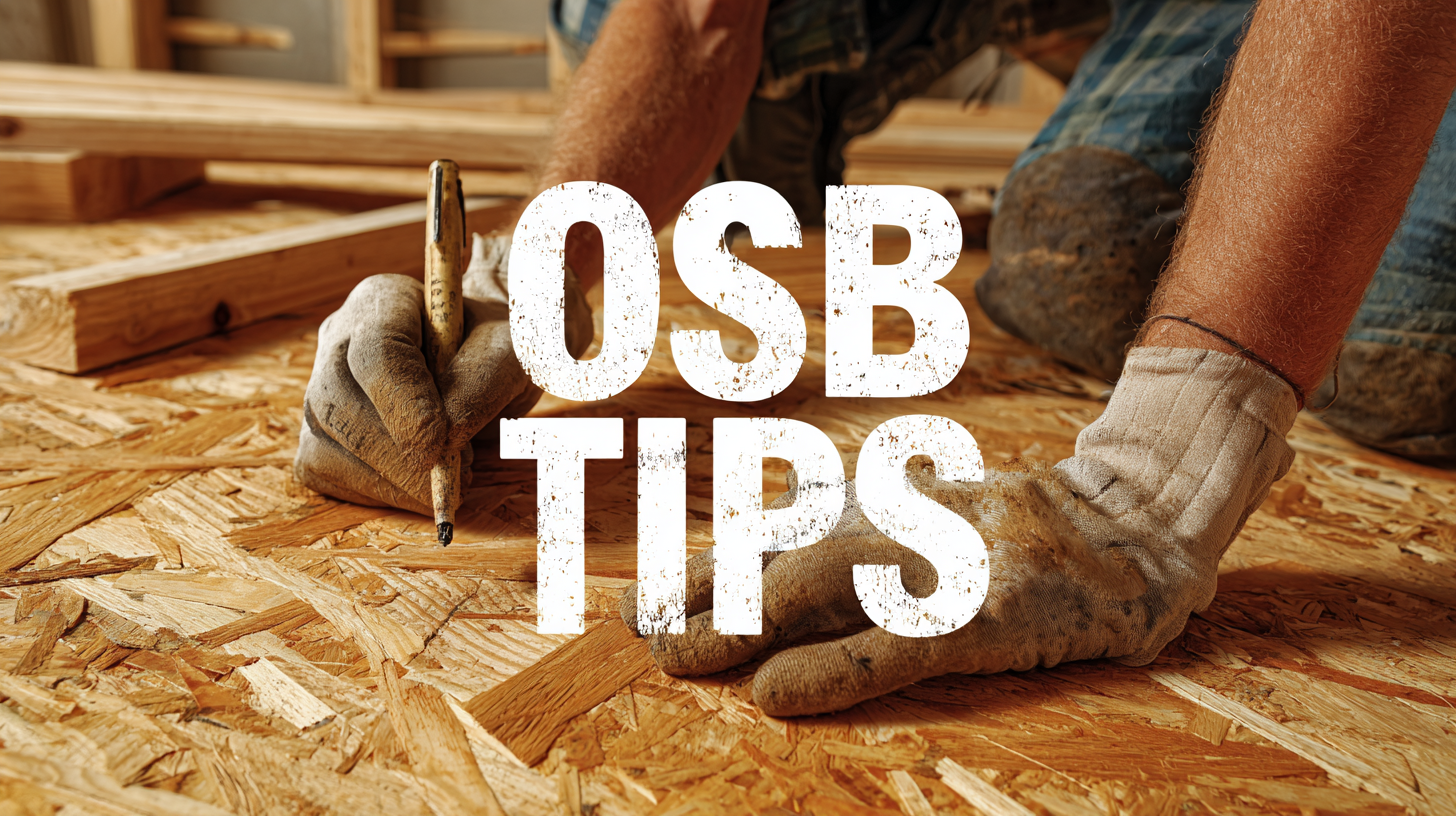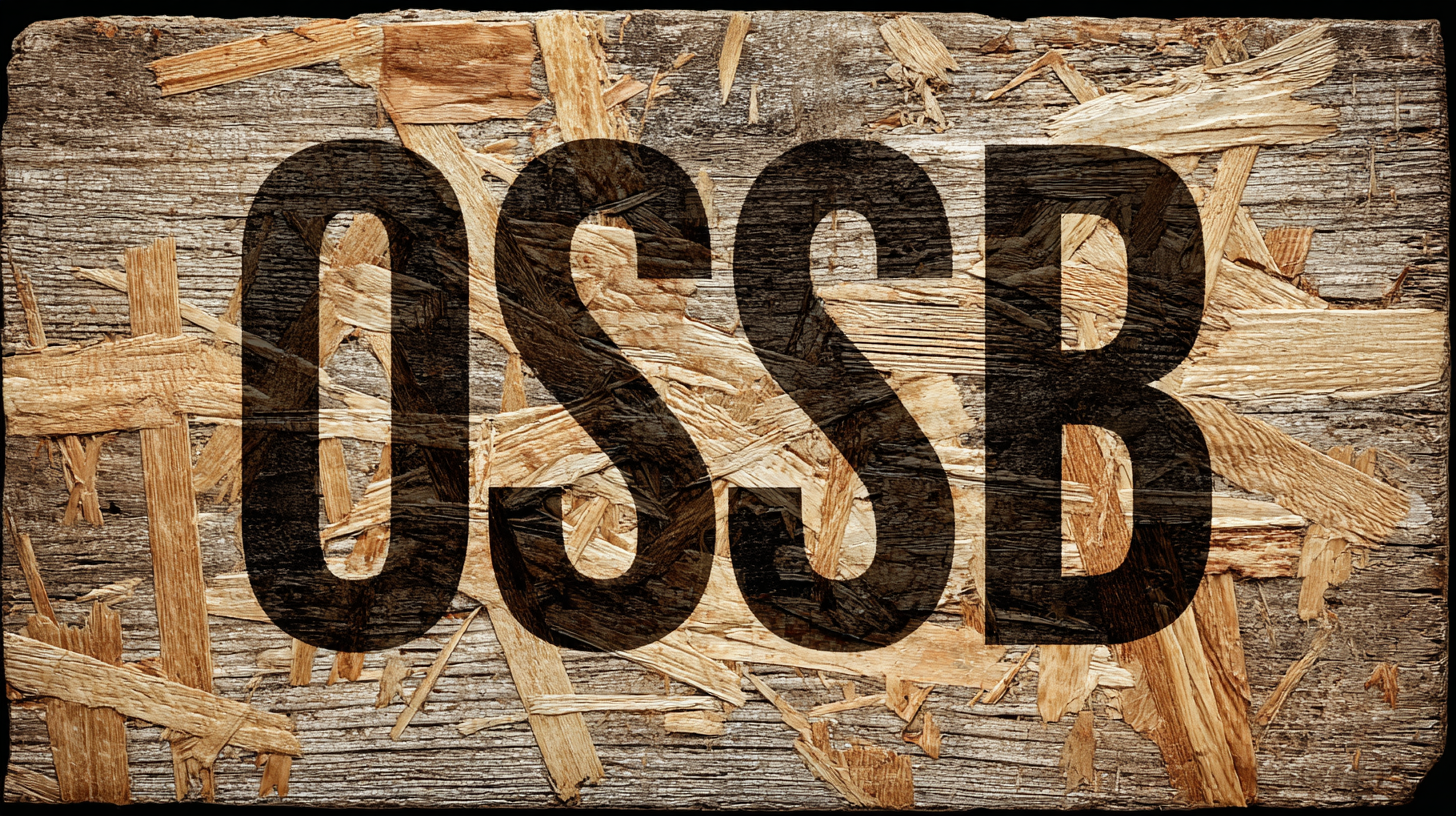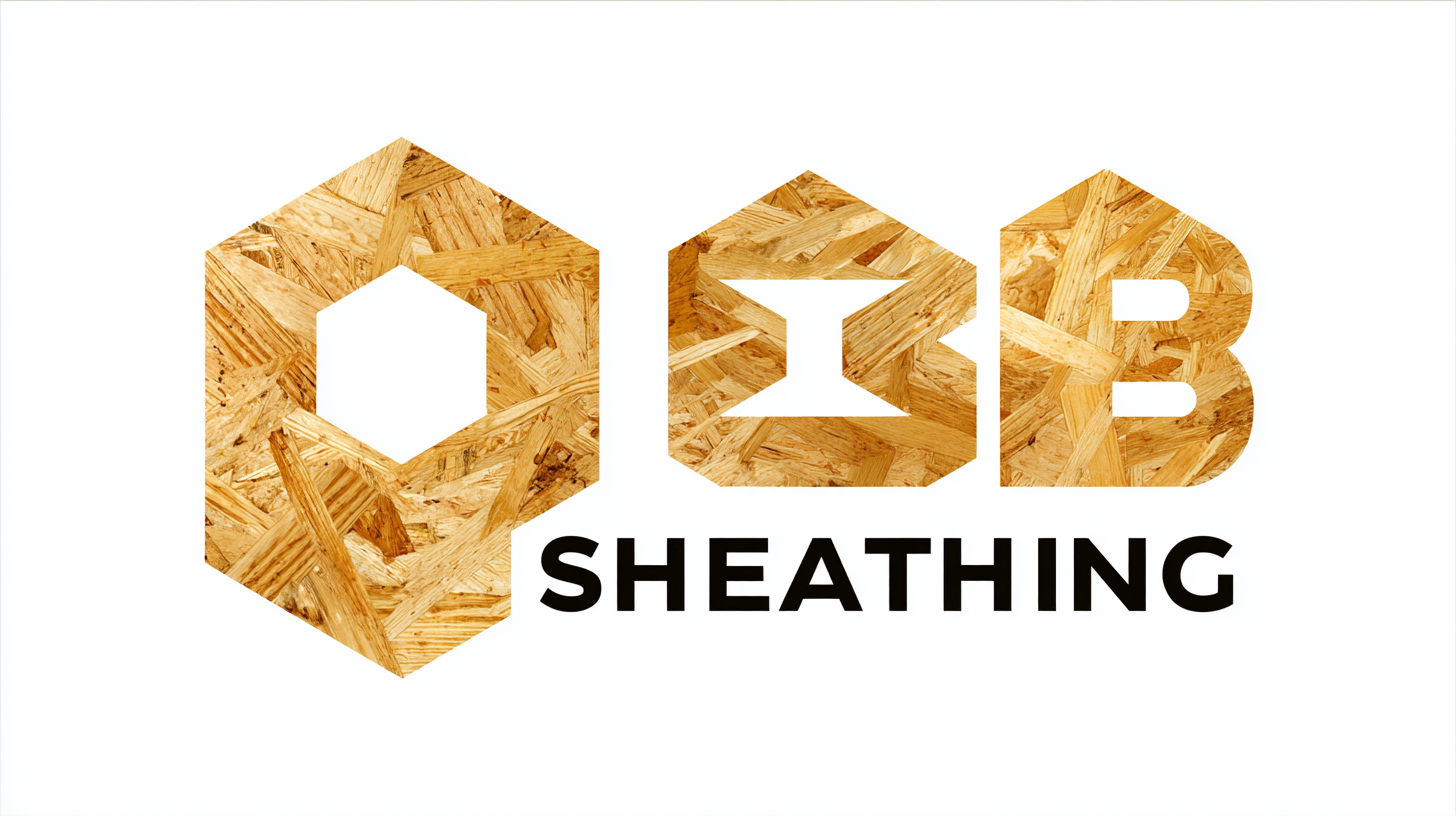When it comes to selecting the appropriate materials for your roofing project, understanding the nuances of OSB roof sheathing is paramount. Oriented Strand Board (OSB) accounts for over 80% of the sheathing market in North America, as reported by the APA - The Engineered Wood Association. Its popularity stems from its strength, versatility, and cost-effectiveness compared to plywood. However, not all OSB products are created equal, and the right choice can significantly impact the durability and performance of your roof system. A recent study highlighted that using high-quality OSB roof sheathing can enhance a roof's resistance to wind and moisture, thus extending its lifespan and reducing long-term maintenance costs. With these factors in mind, this guide will provide you with essential tips to select the best OSB roof sheathing for your unique project, ensuring you make an informed decision that meets both your budget and building requirements.

When selecting OSB (Oriented Strand Board) roof sheathing for your construction project, understanding the materials involved is crucial. OSB is engineered from strands of wood, providing a versatile and economical option compared to plywood. According to the APA – The Engineered Wood Association, OSB can be up to 30% less expensive than plywood, making it a popular choice among builders aiming to balance cost with performance.
In addition to cost benefits, OSB roof sheathing is known for its strength and durability. It boasts a shear strength rating that meets or exceeds that of standard plywood in many applications. The National Wood Flooring Association states that properly treated OSB can withstand moisture and temperature fluctuations, critical factors in roofing applications. Furthermore, its uniform density helps in achieving consistent load distribution, thereby supporting the structure of the roof effectively. Understanding these aspects of OSB will empower you to make an informed choice that enhances the overall integrity and longevity of your roofing project.

When selecting OSB (Oriented Strand Board) roof sheathing for your project, there are several key factors to consider to ensure that you make the best choice. First and foremost, assess the thickness of the OSB panels. Thicker panels provide greater strength and durability, especially in areas subject to heavy snowfall or high winds. Generally, a minimum thickness of 5/8 inch is recommended for residential roofs, but consult local building codes for specific requirements.
Another crucial factor is the exposure rating of the OSB. Look for panels rated for exposure to moisture, particularly if your project will involve a prolonged construction period or is located in a wet climate. Choosing OSB with an exposure classification will ensure that your sheathing holds up against the elements until it is covered with roofing materials.
Additionally, evaluate the long-term performance characteristics of the OSB. It’s wise to choose products treated for resistance against mold and mildew, which can significantly prolong the lifespan of your roof sheathing. Finally, don’t forget to consider the manufacturer's reputation and warranty, as these can reflect the quality and reliability of the OSB you choose.
When selecting Oriented Strand Board (OSB) roof sheathing for your construction project, understanding durability and performance ratings is crucial. Different projects demand varying levels of resistance to moisture, temperature fluctuations, and physical stress. The performance of OSB is often evaluated based on both Structural and Environmental ratings. Structural ratings indicate how well the panel can withstand load and stress, which is particularly important in areas subjected to high winds or heavy snowfall. Ensuring you choose OSB that meets the necessary structural performance criteria can lead to a more robust and stable roof.
Additionally, environmental factors play a significant role in the longevity of OSB sheathing. Look for products with coatings or treatments designed to enhance moisture resistance, as this can prevent rotting and mold growth—a common issue in humid climates. Performance ratings also consider the OSB's ability to handle thermal expansion and contraction without compromising its structural integrity. By carefully assessing these ratings, you can select OSB roof sheathing that not only meets building codes but also stands the test of time, providing peace of mind for your project.
When embarking on an OSB roof sheathing project, budgeting is a critical factor that can significantly impact the overall success of your endeavor. One of the first steps is to determine the quantity of OSB boards required, which will depend on the size and design of your roof. Be sure to measure accurately and account for any cuts or waste during installation. This initial calculation will help you avoid unexpected costs and ensure you purchase the right amount of material.

In addition to calculating material costs, it's essential to consider the quality of the OSB you choose. While cheaper options may seem appealing, investing in higher-quality sheathing can save you money in the long run by reducing the need for repairs or replacements. Keep an eye on long-term performance versus upfront expenses, as selecting durable OSB that stands up to the elements will enhance the longevity of your roof. Lastly, don’t forget to factor in labor costs if you're hiring professionals for installation, as these can vary widely based on local rates and project complexity. Balancing these elements will lead to a more effective budget and a successful roofing project.
When installing OSB (Oriented Strand Board) roof sheathing, proper installation practices are crucial for ensuring durability and performance. According to a report from the APA – The Engineered Wood Association, the thickness of OSB sheathing should be chosen based on the design span and local building codes. For slopes less than 3:12, a minimum thickness of 5/8 inch is recommended. Additionally, maintaining a gap of at least 1/8 inch between panels helps accommodate expansion due to moisture, reducing the risk of warping or buckling over time.
Maintenance of OSB roof sheathing is equally important to prolong its lifespan. Regular inspections are advised, especially after severe weather events. The National Association of Home Builders emphasizes that any signs of water damage or deterioration should be addressed immediately to prevent structural issues. It is also recommended to ensure proper ventilation in the attic space to minimize moisture accumulation, which can lead to mold growth and rot, significantly impacting the integrity of the OSB sheathing. By adhering to these installation and maintenance tips, homeowners and builders can maximize the performance of OSB roof sheathing in their projects.
